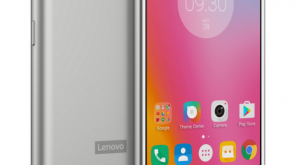Last Updated on September 20, 2024 by Mathew Diekhake
 A custom recovery image is necessary if you want to flash custom ROMs, flash rooting tools such as SuperSU, and flash any other unsigned zip file.
A custom recovery image is necessary if you want to flash custom ROMs, flash rooting tools such as SuperSU, and flash any other unsigned zip file.
All Android operating systems come with a stock recovery image but it is only useful for basic functions, which includes taking a factory reset and flashing signed zip files that can be your official software updates.
If you’re going to install a custom recovery image, then you want it to be TWRP Recovery, as it is the only custom recovery that is currently being developed. You might find some custom ROMs requesting you have TWRP installed, but nothing out there is going to request anything else. Thus TWRP is the wisest choice.
This is what you need to install TWRP Recovery on the Lenovo K53 smartphone.
Details We Should Know
- The custom recovery images available in this guide are only to be installed on the Lenovo K53 smartphone. Most devices have a custom recovery image developed specifically for it, and you shouldn’t install one that is intended for another device unless advised it is okay by a professional.
- This device has its own support thread made on the XDA-Developers web forum if you need to ask any questions.
Files We Need
- Download on your computer the latest version of TWRP Recovery: Primary (Americas) | Primary (Europe).
- Download on your computer the platform-tools from the Android SDK.
How to Install TWRP Recovery on Lenovo K53 Smartphones
1. Make sure you’ve installed the universal ADB drivers on the computer.
2. You need to have the platform-tools part of the Android SDK on your computer. From the download link, scroll down until you get to the command line tools section and then download the package that is made for your operating system.
3. Once you have the SDK Manager on your computer, check the box only for the platform-tools, so you end up with the adb and fastboot binaries installed on the computer. (You could also install the drivers from there as well if you wanted.)
4. Pick up the Lenovo K53 smartphone and navigate to the Settings > About and tap your finger over the build number at least seven times so that the Developer Options menu becomes unlocked. Then go back to the Settings, enter the Developer Options menu and then enable the USB debugging mode.
5. Connect the Lenovo K53 smartphone to the computer by using the USB cable that it comes with.
6. Now on the computer open the Command Prompt and type the adb reboot bootloader command and hit “Enter” on your keyboard to get the Lenovo K53 smartphone into the bootloader mode and ready for the flashing.
7. The Lenovo K53 smartphone needs to be unlocked before you can flash a custom recovery image on it. Do that by typing the fastboot oem unlock command and press “Enter” on your keyboard and the device will then be unlocked.
8. Make sure you have copied the TWRP image file to the same folder as the adb and fastboot binaries. Also when you’re there, change the name of the TWRP to “twrp.img” by right-clicking the mouse pointer on it and selecting the “Rename” option from the menu.
9. From the command line, type the fastboot flash recovery twrp.img command and hit “Enter” on your keyboard to flash the custom recovery.
10. Lastly type the fastboot reboot command and as soon as the Lenovo K53 smartphone reboots, hold down the key combination to boot directly into the recovery mode. (If you don’t, sometimes the stock recovery will wipe over the custom recovery you just installed.)
The custom recovery image for the Lenovo K53 smartphone is now installed, and you are ready to boot into recovery mode and start flashing the custom ROM or rooting zip files.
